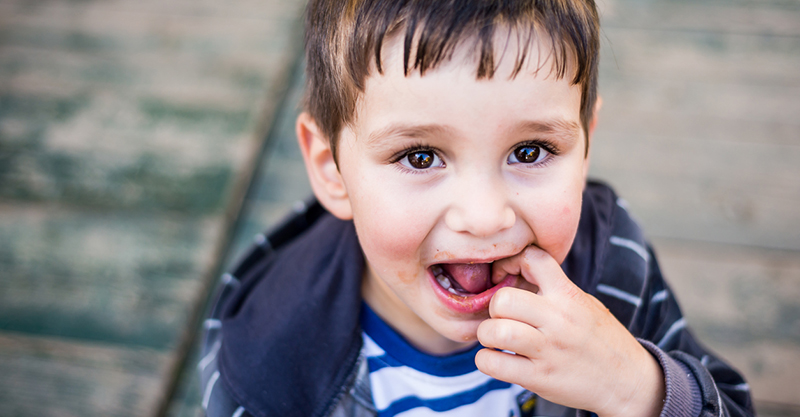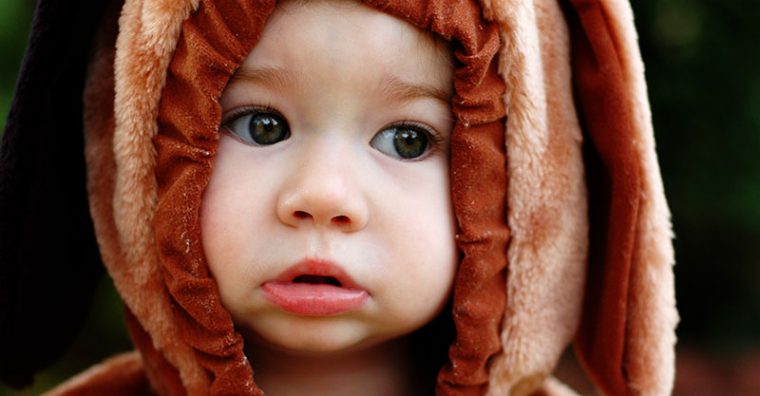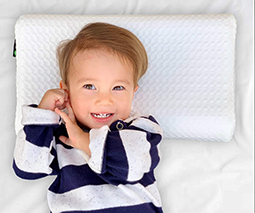“Normal and healthy”: 7 ways to celebrate your shy child

Shy children need to be celebrated too, here’s how, writes Dr Vanessa La Pointe.
It has long been that social children are celebrated while the shy kid prompts worry or concern. Well-meaning adults might wish for the shy child to “come out of their shell”, or wonder if extra playdates should be scheduled as a potential cure. It is even the case on standardised intelligence assessments that shy people perform, on average, 20 points lower than their more outgoing peers.
That is a big enough difference to have someone wrongly classified as being below average. Yikes!
In these and many other ways, shy is often pathologised. And yet, an understanding of the developmental needs of your growing child can shine a very different and positive light on shyness.
Shyness is natural and happens for a reason
Why? Because we are creatures of attachment and this means two things.
The first is that your child is born into the world knowing you are their best bet. In fact, without your love they will not be able to survive and so anything – and anyone – that gets in the way of that may be experienced by your child as a problem. This means your child will orient towards you and even cling to you, while simultaneously orienting away from or even rejecting others. What does this look like? Shy.
The second is that your child is meant to orient to YOU for guidance along their developmental pathway, and not to other people. Think of it this way: Do you want your child to do the bidding of strangers?
No.
This is because you can’t be certain that other unknown people can be trusted to have your child’s best interests at heart. Turns out that your child also knows this, albeit on an intuitive level. Children are born with the instinct to reject the influence of those to whom they are not well-attached! So your child who appears to be prone to social withdrawal and a strong preference for the company of only the people to whom they are well-attached is super duper normal.

And so shyness is not actually a problem that needs to be fixed. Rather it is a brilliant adaptation that must be understood within the context of healthy child development, and indeed, even celebrated.
Read more about temperament:
- Shy vs loud: How a child’s temperament HUGELY influences your parenting style
- So your bub won’t sleep? An expert reveals a HUGE upside
- 7 most common things new mothers hear (and how to respond!)
The challenge for adults
The challenge for a lot of parents and other big people is trying to sort out why there is such a range of intensity with some children appearing to be so shy that they hardly interact with other people, and other children appearing to be so outgoing that it seems possible they might not have any shyness in them at all!
How is a parent supposed to know what is normal and what is not?!
Ninety-nine percent of the time the answer is that all of it is normal. The other one percent of the time is up to child specialists to sort out and usually involves a significant history of trauma for the child that has interrupted the child’s understanding of how a relationship works. But for the rest of the kids? NORMAL is the definite prognosis.
The range of intensity can be explained by one or more factors related to temperament, life experiences, and gender. And depending on how significant each of these factors is, the child will have a stronger or more subtle instinct to reject the influence of those to whom they are not well-attached. That is, they will present as more or less shy.
Shyness and strong instincts
Consider child temperament. Children who are sensitive – who tend to take on a bit more of the world than others – may present as shyer. This is partly because they have stronger instincts about everything and along with that, stronger reactions to those instincts, including the instinct to reject the influence of others (i.e., appear shy). Sensitive children also have stronger reactions to the world around them which may have them experiencing higher levels of need emotionally speaking from their primary caregivers.
Now think of a child who is experiencing some overwhelming things in life. It may be that the child is in new surroundings, or your family has gone through some changes, or there is a new caregiver or something about life is just feeling unfamiliar or unsettled. If too many of these things happen all at once, too often, or for too long, it can lead a child to be overwhelmed and desperately needing attachment to their Number One in order to feel more settled. In this way, life experiences can also lead to a child presenting as shyer.
Interestingly, there are also some gender differences in how shyness can express, primarily because of how we socialise our children. Boys can be viewed as being more “aggressive” in their shyness. My youngest, very sensitive son would actually growl and bare his teeth at any adult who dared to be too intrusive in attempting to elicit smiles or hellos from him when he was young. Now that he is approaching adolescence, he is still a kid who enjoys his alone time and time with his immediate family, while definitely being able to handle himself in all sorts of social situations. As a contrast, shyness in girls can sometimes present more as withdrawal and avoidance without the overlay of aggression.

Don’t discipline shyness
It is important as parents, and as our child’s Big People, that we do not try to discipline our shy children in an attempt to make them more “socially appropriate” or more extroverted. Rather, we must discipline ourselves to honour our children’s natural expression of themselves and shield them where appropriate from too much intrusion from the world around. A hissed, “Say HELLO to Auntie Jane!” does not recognise your child’s needs, nor does it elicit a genuine response. Oftentimes, the fear of appearing rude will cloud a parent’s best intentions, and will instead result in reactionary, and even frustrated, parenting.
Instead, celebrate the shy nature of your child. At that moment, make eye contact with Auntie Jane and express a warm hello while allowing your child to stand behind your legs. There is no need for an apology for your child’s behaviour. There need not be any guilt for setting boundaries with well-meaning, but sometimes pushy, adults. If there is guilt, this has to do with your own programming as a person in wanting to keep everyone around you happy or perhaps in wanting to get the stamp of approval from others in having done a good job as a parent. It does not have anything to do with your child or her development. Simply recognising that and internally acknowledging your own needs in order that you might address them and care for yourself is an awesome thing for a parent to do.
So shyness really isn’t something that needs to be fixed or worried about. Instead, it’s an amazing thing to champion the essence of who your child is. If she or he is shy, embrace it!
Here are some ways to help you celebrate and grow your shy child:
- Make sure to be the appropriate shield for your child and protect them from the intruding influence of other well-meaning grown-ups.
- Cater to your child’s temperament and needs. Plan lots of downtime with just you, family, or even alone time for.
- Keep social situations manageable – so one friend instead of two or three for a playdate, for example.
- Keep an eye on your social calendar – lots of birthday parties and celebrations might simply be too much. Avoid the dreaded feelings of FOMO (fear of missing out) and instead, consider the needs of your child.
- If you are planning for out-of-home care, think about smaller daycares over larger centres.
- Be sure to match-make your child to new teachers and other carers so there is some familiarity right off the bat. Matchmaking can be a great tool here.
- Plan for a gradual entry into new childcare or school settings over the course of several days.
Overall, the goal is to create a new narrative for yourself about what shy is. Shy is normal, healthy and the result of your child being brilliantly attuned to his or her developmental needs, as aligned with his or her temperament and life experiences.
Your child seeks you as their confident guide, and that demonstrates a healthy attachment. No guilt, no apologies. You’ve got this.









